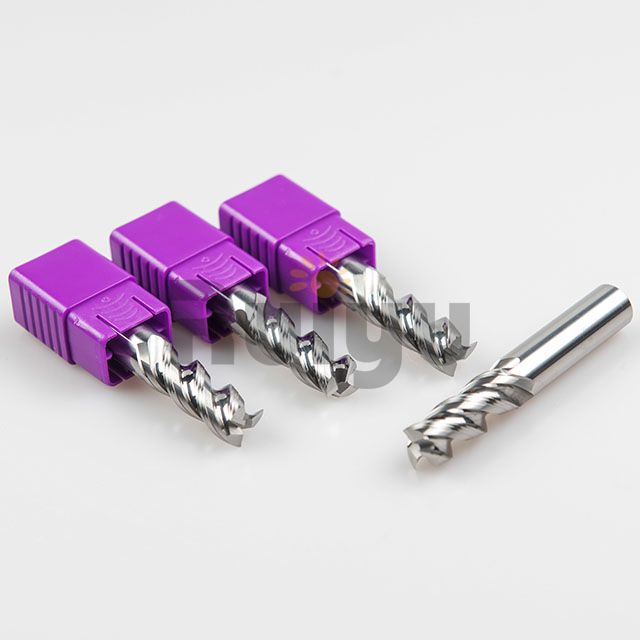Introduction
The manufacturing industry has always been the backbone of global economic growth, and precision tools like carbide end mills play a crucial role in shaping that success. As we step into 2025, the global carbide end mill market is experiencing remarkable changes. From rising industrial applications to challenges like supply chain disruptions, this industry is both dynamic and complex. But what does the future hold? Let’s dive deeper.
Understanding Carbide End Mills
What Are Carbide End Mills?
Carbide end mills are cutting tools made from tungsten carbide, a material known for its hardness and heat resistance. Unlike regular steel tools, these end mills offer higher precision, durability, and efficiency in cutting metals, composites, and even plastics.
Why Are They Important in Manufacturing?
Think of carbide end mills as the backbone of machining. They’re used in milling, drilling, contouring, and shaping critical components in industries such as automotive, aerospace, and electronics. Without them, achieving tight tolerances and high production speed would be nearly impossible.

Global Market Overview
Market Size and Revenue Trends
The global carbide end mill market is projected to grow significantly through 2025. Analysts estimate a compound annual growth rate (CAGR) of around 6–8%, fueled by industrial automation and advanced machining needs.
Regional Market Insights
While Asia-Pacific dominates due to its massive manufacturing hubs, North America and Europe remain strong players thanks to high demand in aerospace and automotive sectors. The Middle East and Africa are also showing gradual adoption, primarily driven by construction and industrialization.
Key Growth Drivers
Rising Demand in Automotive Industry
The automotive sector continues to demand precision tooling for components like engine parts, transmission systems, and electric vehicle (EV) components. Carbide end mills are vital for ensuring accuracy and reducing machining time.
Growth of Aerospace and Defense Sector
Aircraft manufacturing requires advanced cutting tools for materials like titanium and composites. Carbide end mills, with their heat resistance, are preferred for such high-performance applications.
Expansion of Industrial Machinery Applications
From energy to heavy machinery, the global push for industrialization is expanding the application of carbide tools in multiple industries.
Market Opportunities
Increasing Adoption in Emerging Economies
Countries like India, Vietnam, and Brazil are rapidly industrializing, creating huge opportunities for carbide end mill manufacturers to capture untapped markets.
Technological Advancements and Smart Manufacturing
The era of Industry 4.0 is bringing CNC machines, robotics, and AI-powered machining into mainstream manufacturing. Carbide end mills are being redesigned to complement these smart systems.
Eco-Friendly and Sustainable Tooling Solutions
Sustainability is no longer optional. Manufacturers are developing recyclable, long-lasting carbide tools to meet stricter environmental standards.
Market Challenges
Fluctuating Raw Material Prices
Tungsten carbide, the core material, often faces price volatility due to mining restrictions and geopolitical issues. This directly impacts profit margins.
High Competition and Pricing Pressure
The market is crowded with global giants and local manufacturers, creating fierce price competition and challenging product differentiation.
Supply Chain Disruptions Post-Pandemic
COVID-19 exposed vulnerabilities in global supply chains. Although recovery is underway, transportation delays and raw material shortages still pose risks.
Regional Outlook
North America
Strong aerospace and defense investments continue to drive demand, with the U.S. leading in R&D for advanced machining tools.
Europe
Germany, Italy, and France remain key players, with innovation in precision tooling for automotive and industrial machinery.
Asia-Pacific
China, Japan, and India are the growth engines. China dominates production, while Japan focuses on high-quality precision tools. India is emerging as a fast-growing hub.
Middle East & Africa
Although still a smaller market, infrastructure projects and growing manufacturing bases are fueling demand in this region.
Competitive Landscape
Leading Global Players
Some of the top players include Sandvik, Kennametal, Mitsubishi Materials, OSG Corporation, and Guhring. Their innovation-driven strategies keep them ahead in the market.
Strategies Adopted by Key Manufacturers
Investing in R&D for advanced coatings and tool geometries
Expanding into emerging markets through partnerships
Leveraging digital platforms for global sales
Future Trends
Integration of AI and IoT in Tool Manufacturing
Imagine carbide end mills equipped with sensors that predict wear and optimize performance in real-time. This is becoming a reality as AI and IoT enter the tooling industry.
Customization and Advanced Cutting Solutions
Instead of one-size-fits-all tools, manufacturers are demanding highly customized carbide end mills for specific applications, pushing innovation further.
Conclusion
The global carbide end mill market in 2025 presents a fascinating mix of growth opportunities and pressing challenges. While industrial expansion and technological advancements open new doors, raw material volatility and competitive pricing remain hurdles. Companies that adapt quickly, invest in innovation, and expand into emerging markets are poised to lead the next wave of growth.
FAQs
1. What industries use carbide end mills the most?
Primarily automotive, aerospace, electronics, and industrial machinery.
2. Which region leads the global carbide end mill market?
Asia-Pacific, particularly China, dominates in terms of production and consumption.
3. What are the biggest challenges in this market?
Raw material price fluctuations, supply chain issues, and high competition.
4. How will technology impact the market by 2025?
AI, IoT, and smart manufacturing will drive product innovation and efficiency.
5. Are carbide end mills environmentally sustainable?
Manufacturers are developing longer-lasting, recyclable, and eco-friendly carbide tools to align with sustainability trends.













